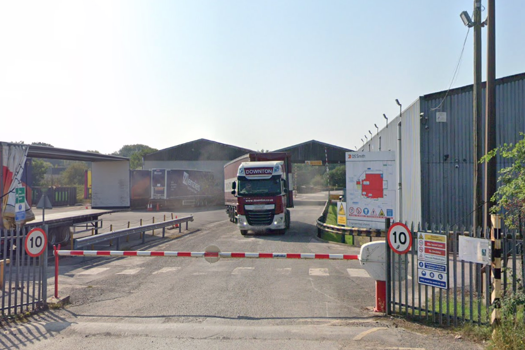In the face of such challenges you could be forgiven for running for the hills, but there are some businesses out there who have rolled their sleeves up and got stuck in.
Understandably, some of these leading lights don’t want to reveal their secrets. In researching this feature a number of firms declined to comment because they believed it would be like giving away the recipe for Coca-Cola to say too much about how they approached these challenges.
An example of the explosion of jobs comes from a printer serving a number of sectors using a mix of litho, digital and large-format equipment with a turnover in the mid teens of millions. Three years ago it was handling around 200 jobs per day – an already huge figure compared to just a few years before – which has since grown exponentially and now stands at 6,000 jobs per day. While turnover grew in that time, it was a far more modest rise. That volume of sales against turnover puts the average order value in the tens of pounds, which leaves little room for error in pricing or for human intervention in production or administration.
Manageability
Attempting to handle that volume of order processing manually would be impossible. Even if you take the starting figure of 200 jobs per day, if those orders came in over an eight hour day that would mean winning 25 jobs per hour, or one every couple of minutes. A task beyond even the most agile of estimators and production managers to keep tabs on manually, but well within the capabilities of many press halls to produce.
One place to start the task of getting on top of this challenge is in your MIS, specifically in the estimating module.
“Our estimating module – the backbone of our system – does the calculation of the different possible production processes including the price and time taken for different processes and will rank them,” says Tharstern senior consultant Roy Woosey. “It is then up to the operator to choose which process, or the choice can be made automatically.”
Other MIS vendors tell a similar story, Optimus UK sales director Steve Richardson says: “Customers using our systems can work fully automatically semi-automatically or manually.
“Some customers in the Nordics are more advanced than in the UK, and they are looking for fully automated, lights-out production.
“That market is further ahead than the UK in that respect, because there is more respect for process and an understanding of the value of software and IT.”
UK firms that understand the importance of software and systems and embrace them to reap the rewards include the leading lights in the web-to-print market, and it’s not just because they’ve embraced online sales, it’s to do with taking a more systematic approach to their businesses.
“As the print landscape continues to evolve we see more printers becoming specialised to maximise profits by increasing the orders that hit the sweet spot for their production,” says Tradeprint chief innovation and product officer Rod Scrimgeour. “We have a network of strategic partners that we work with, our internal production plants are part of that network. Tradeprint is now fully connected to [parent] Cimpress’s Mass Customisation Platform (MCP), where we evaluate all the attributes that make up the specification of the order and algorithms then ascertain which manufacturing plant to route the order to based upon the capabilities and optimised print processes of that partner. Ultimately this means that our customers enjoy great products, produced to highest quality and our strategic partners enjoy additional profitable growth – it’s a win win.”
Overview
Regardless of your route to market one of the first steps to take is to understand what products you are good at producing, how to do that the most effective way, and what the cost of doing that will be. In other words, the starting point before you implement any technology is to get a good understanding of your production processes and their costs. Whether you do that yourself or get someone in to help will depend on your circumstances. MIS vendors are one option for external help.
“We do a two-day exercise to calculate true costs and then measure again over a year to test any assumptions,” says Tharstern’s Woosey. “There’s no point using the figures if your hourly rates are based on achieving a certain number of hours but you can’t reach that figure.”
Once you have a measure of the costs you need a tool that can take the attributes of an incoming job and then model all the possible ways your factory could produce it and to determine the best route to take. That may be an existing estimating module, it may be part of a new MIS, or it may end up being a self-developed system. All the printers spoken to for this article chose to develop in-house as they couldn’t find anything to fit their needs.
There are a number of approaches to deciding how to produce a job.
“Currently we have a series of pre-configured flows based upon the order attributes,” says Tradeprint’s Scrimgeour. “However, we are now examining pushing this further. There are many industries using artificial intelligence (AI) – there is no reason that print can’t.”
Bluetree Group takes a different approach, according to its head of core systems Lewis Burke: “We don’t have fixed product routing. So, every job is broken into a series of attributes. These attributes are then run through an algorithm which determines a cost of production for every possible route.
“Our processes are fully automated, however, production managers can use their experience to make changes should they deem it necessary. Currently we’re working on a system that takes into account the load on finishing processes before making routing decisions.
“We produce 5,000 jobs a day and with so many orders, you cannot pick one job in isolation. You need to have a holistic approach because a decision that is right today may be different next week depending on the other work going through.
“We don’t separate print and finishing process, we look at end-to-end, and want the most cost-effective method with the minimum throughput time.
“With our inkjet technology and perfect bound books, we tolerate a marginally higher print cost. However, this method negates the need of section fold and collation, thus reducing labour and making it, overall, a more cost-effective production stream. This is why we have one manager overseeing both the print and finishing of each stream so they can consider the end-to-end journey.”
Printed Easy
Letchworth Garden City-based Printed Easy is a perfect example of transforming a print business through automating estimating and planning and the root and branch changes that can result. Formerly known as Falkland Press, last year the firm decided to focus purely on its online business and rebranded to reflect that.
The situation managing director Jon Lancaster found himself in a few years ago is familiar to many: “We started to do more marketing and as we got more jobs in our people were struggling to book all the jobs in.”
Having researched available software and found nothing met his needs, Lancaster decided to develop a system in house, which was christened Chronos after the Greek god of time.
Two years of development later and all jobs are booked in automatically. Staffing has changed with just one person each in pre-press and customer service but there is now a full-time team devoted to developing and maintaining its software systems.
“We’ve got four developers who I manage, a front-end developer, a back-end developer, a mathematician developer and a Switch configurator,” says Lancaster. “The cost of development including my salary and the salaries for the developers is huge. But what else was I going to do? It’s not just about throwing money at the problem; it is also about mindset.”
A key part of that is the realisation that development of the software is essential to the ongoing success of the business.
“If we reduced the investment it would stop the progress. Last year revenue grew by 60% and this year I expect similar.”
Ultimately it forced Lancaster to make tough decisions on where to focus. “I didn’t want to try to run general commercial alongside web-to-print – it would be too complicated to manage. We walked away from business that we couldn’t migrate to online. That was painful, especially saying goodbye to long-standing account customers who didn’t want to change,” he explains.
A new range of large-format products has just gone live on the company’s site.










